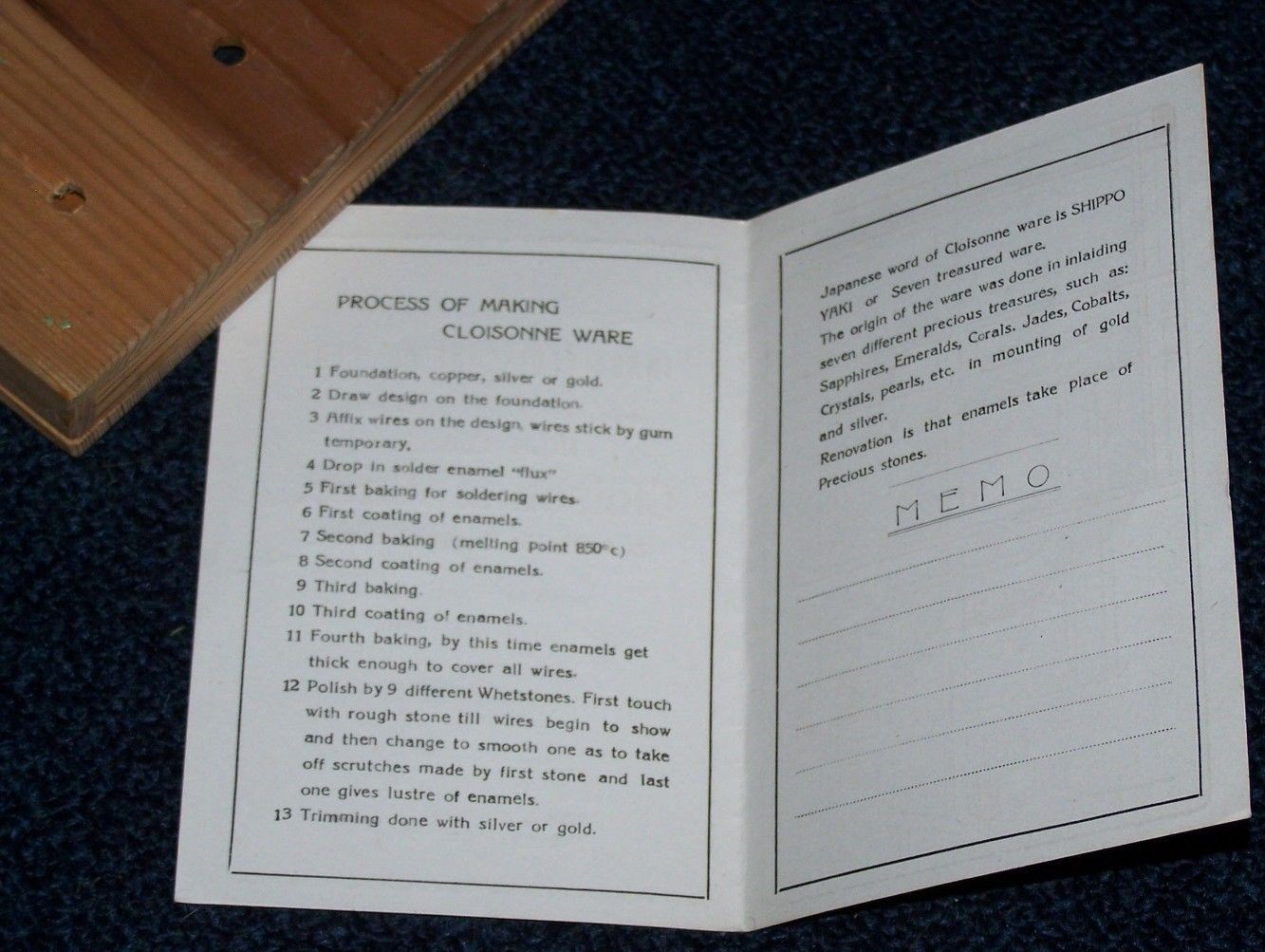eBay vendor wondollar has a set on offer that appear to be Inaba buttons as well:
And I found one in my collection:
Note the tiny circles surrounding the rims - a very typical Japanese motif.
The July 2004 issue of the National Button Society's Bulletin has a nice article, "Enamels of the Modern Era" by Bruce Beck. You can purchase a copy from the address in this PDF.
One of Beck's photo illustrations, based upon the above evidence, seems to be mistakenly attributed as Chinese, when it should be Japanese.
In later decades after World War II the Inaba Company seems to have shifted to stamped and enameled designs, rather than those featuring hand-applied wires. This set is still accompanied by its original purchase bag:
More examples of Inaba buttons:
This blogger has posted an interesting series of photos he took in 1976 Japan, including several of the Inaba factory and showroom, two of which are quoted below:
And as a final bit of puzzling evidence, an exquisite set of Japanese chrysanthemum buttons of unknown date and atelier (anyone with an opinion, please feel free to chime in).
 |
| "FIVE EXTREMELY FINE JAPANESE CLOISONNE SILVER BUTTONS. Large size set decorated with chrysanthemums on blue ground, silver backs with wire loop shank. 1 3/8. (Three missing shanks) " |
UPDATE: eBay vendor patiquespottery2 had another example of an Inaba cloisonne button:
 |
| Ebay vendor patiquespottery2 |














Hello,
ReplyDeleteThe five silver buttons with chrysanthemums have very similar pattern and quality (exclusive art and use of very fine silver wire) to Japanese cloisonne vases from Meiji period (1868-1912), so I believe that they are from the same period of "Golden Age" of Japanese cloisonne.